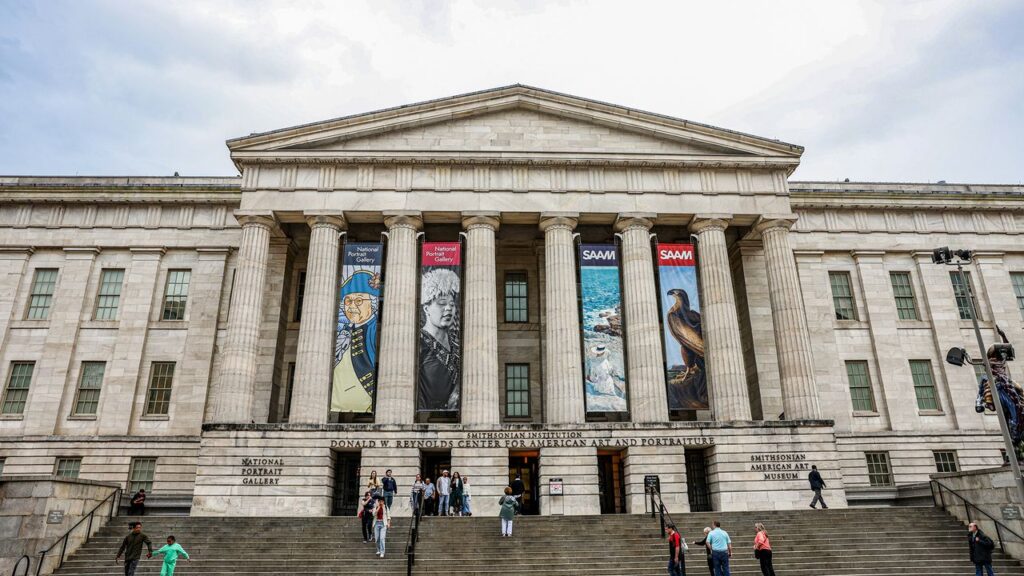While The Smithsonian was processing that request, more tumult ensued as Amy Sherald, whose portrait of former first lady Michelle Obama made her a star, canceled an upcoming solo show at the National Portrait Gallery because she said the museum had told her that her painting of a transgender Statue of Liberty might be removed to avoid provoking Trump. (The Smithsonian denied doing so, saying in a statement that it only intended to add context to the presentation of the portrait. Sherald did not follow up on an interview request for this story.)
Rottenberg, whose inclusion in the forthcoming Hirshhorn show is beyond her direct control because the work planned for the exhibition is owned by the museum, told me that Sherald’s decision was “amazing.”
“Amy Sherald stood up to them,” Rottenberg said, adding that political influence over museum content is “poison.”
Sherald was in a strong position to take a principled stand, though taking such public positions carries risk for even the biggest names in the arts world. Her notoriety gives her plenty of options elsewhere. Lesser-known artists might have less leverage. The lure of being exhibited at an internationally renowned institution, even if it is compromised by political influence, might be too much to resist for artists still struggling to make names for themselves, an outside contributor to Smithsonian exhibition planning told me on condition of anonymity because of concerns about retribution.
What lies ahead is uncertain. Trump’s order to review content of eight museums is monumental in scope and will be followed by more museums, Halligan has said. Might the pandas at the National Zoo—on loan from China—someday be screened for their compliance with a Trumpian worldview?
For now the museums under the microscope are the National Museum of African American History and Culture, American History (which displays Julia Child’s kitchen), Natural History, and the American Indian, as well as the National Air and Space Museum (home to Evel Knievel’s Harley-Davidson), the American Art Museum, the National Portrait Gallery, and The Hirshhorn. Will they comply or push back?
“I want the Board of Regents to stand up,” West, the former museum director who also has a background as an attorney, told me. “It is in their hands…. It’s clear to me—notwithstanding the fact that the administration lacks the legal authority to be doing what they’re doing—that publishing that first statement was not sufficient. They need to hold the territory.”
For an institution that gets more than 60% of its funding from the federal government and had a $1 billion budget request before Congress as Trump was issuing his order, the pressure is enormous. As will be the task. Among the materials Trump’s White House is ordering The Smithsonian to provide are exhibition texts, wall didactics, websites, details about current and future exhibitions, especially those related to planning for next year’s 250th anniversary of the signing of the Declaration of Independence, and proposed artwork.
The request is so far-reaching that in mid-summer some museum directors were at a loss how to even begin. If the Trump plan were to metastasize to include the entire Smithsonian collection that would mean cataloging and analyzing some 155 million objects.
“What Lonnie Bunch is facing now is kind of a no-win challenge of trying to define the red line beyond which an organization loses its virtue, which is fundamentally its credibility in the public,” Brian LeMay, a former executive at The Smithsonian who is now a museum management consultant, told me.
West, who remains the director emeritus of The Smithsonian Institution’s National Museum of the American Indian after having served for more than a decade and a half until 2007, says the Smithsonian staffers he’s talking to are in the midst of an existential crisis.
“They’re horrified, and they should be,” West said. “The anxiety level is bumping up against 10 on a scale of one to 10.”
The unrest at The Smithsonian prompted a former staffer to call to mind that the crypt of James Smithson lies inside the red sandstone Smithsonian Castle headquarters. The crypt that holds the final remains of Smithson, who gave his name and fortune in the early 1800s to found one of America’s most revered institutions, is out of view while The Castle undergoes a yearslong renovation. The staffer wondered whether the institution will be forever altered—for the worse—when the renovation is complete and his crypt is once again open to the public: “He has to be rolling over in his grave.”

